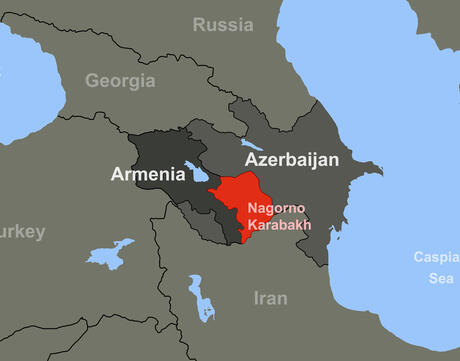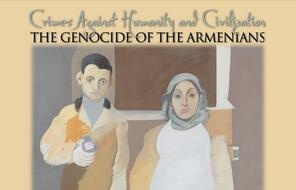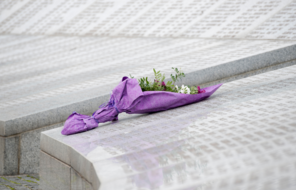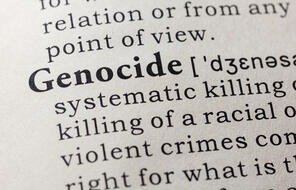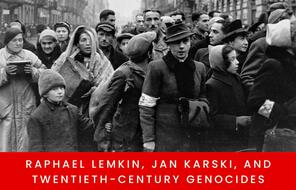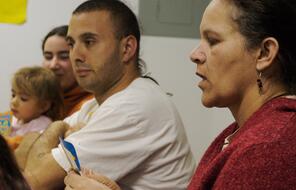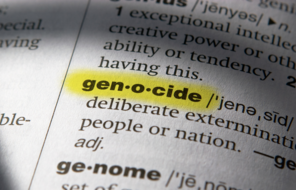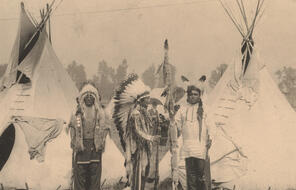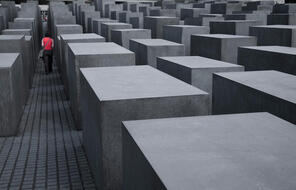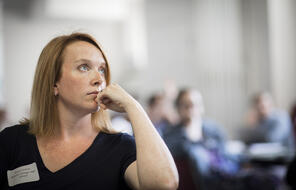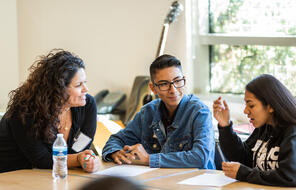A global pandemic, economic crises, protests for racial justice, wildfires and hurricanes forcing people to flee their homes and businesses, and an impending election in the US: these are just some of the events occurring right now. And, in the midst of this, a violent conflict is taking place between Armenia and Azerbaijan in Nagorno-Karabakh. It is a humanitarian crisis. We know from history that mass violence does not happen when it is convenient, in peace, when we are prepared to act. It often happens when the world is distracted, when we are busy and exhausted.
We spoke with Marc Mamigonian, academic director of NAASR (National Associate for Armenian Studies and Research), to help us understand what is happening. Following our conversation with Marc you'll find links to some Facing History resources and connections questions.
Facing History: Help us understand what is taking place right now between Armenia and Azerbaijan in Nagorno-Karabakh.
Marc: What is happening now springs from the fact that there has been no true resolution to the war fought over Nagorno-Karabakh in the early 1990s. Azerbaijan does not accept that Armenian-inhabited N-K is a de facto independent state; N-K and Armenia do not accept the possibility of N-K going back to being under the control of Azerbaijan. Azerbaijan has been building up its military enormously for years; and Turkey, which has always strongly supported Azerbaijan, is now also actively encouraging and facilitating its aggression against N-K and Armenia. Also, since Armenia’s 2018 “Velvet Revolution”—which threw out a corrupt regime and replaced it with a reformist, pro-democracy leadership—the autocratic Azerbaijani and Turkish states may well see a democratic Armenia as an annoyance that needs to be crushed as a way of discouraging reformists in their own countries.
Facing History: Armenians—and others—are making connections to 1915 and the Armenian Genocide. Why?
Marc: In the late 80s and early 90s, when the Karabakh independence movement and subsequent war were happening, the Armenians on the ground in N-K and Armenia felt that they were facing the real risk of another genocide. The extremely close relationship between Turkey and Azerbaijan, which is ethnically and linguistically Turkic, contributed and still contributes to this. Furthermore, the rhetoric from Azerbaijan and Turkey has a disturbingly genocidal tone. The former denies the legitimate existence of Armenia and N-K at all and the latter promotes a kind of neo-Ottomanism and Turkish dominance in the Caucasus region. Azeri threats to, say, bomb Armenia’s Metsamor nuclear power plant, which would destroy the small country, are also genocidal in intent. However, unlike in 1915, Armenia and N-K have a military with the will and the capacity to fight back.
Facing History: It's primarily the Armenian community that is speaking up and urging people to pay attention right now, to know about the past and understand its legacies. Why?
Marc: The Armenian community, quite correctly in my view, feels strongly that the violence and genocide inflicted on the Armenian people in the past has not been properly recognized by the world in general and certainly not acknowledged, much less redressed, by the perpetrators. The community also feels strongly that the injustices of the past are a legacy that continues to breed violence and injustice in the present. In this sense, Turkey, through its denial of the WWI-era genocide and its ongoing collaboration with Azerbaijan, cannot be seen as a post-genocidal state: it has never faced what happened, actively denies it, and continues to threaten the existence of Armenia. The past and its legacies are directly connected to what is happening now.
Facing History: Many people watching this conflict are commenting on the representation of Armenia, in particular, by the media. How can we support our educators to get accurate information on this conflict and to consider questions of media literacy?
Marc: We can support our educators by providing them with materials that draw on the considerable scholarship that has been done on these issues; advocating for the recognition of these issues by the federal government since such recognition influences what is taught in our schools; challenging the misrepresentations and false equivalences endemic in our media; instructing teachers and students in how to interpret these misrepresentations and false equivalences and to understand where they come from; and emphasize that these kinds of misrepresentations are not merely an “Armenian problem” but are related to other similar media distortions.
Tools for the Classroom:
- Explore the concept of the "universe of obligation" to better understand how we determine who is important to us, what events we pay attention to, and when we should act.
- Introduce aspects of the Armenian Genocide (even if you are not teaching the history yet) by using the story of Raphael Lemkin. After the Armenian Genocide, Raphael Lemkin asked, "Why is the killing of a million a lesser crime than the killing of an individual?" This clip from Watchers of the Sky and the accompanying activities explore Lemkin's effort to establish an international law to prevent mass violence against a group of people.
- How do you move from recognizing a problem to taking action? This unit explores the legacy of Raphael Lemkin, who coined the word "genocide" and drafted the Genocide Convention. A study of Lemkin's work helps students understand traditional world history themes such as sovereignty, diplomacy, and law; as well as deepen students’ understanding of political responses to mass violence.
- Consider the role of media literacy as a way into understanding what is taking place.
- People of Armenian descent, including in California, have faced hate crimes related to this violent conflict. Utilize the universe of obligation and media literacy tools to discuss whether students knew this information and why, so often, it becomes the responsibility of victims of mass violence and hatred to speak up. How can we expand our universe of obligation and make it more inclusive. Consider the stories of Billings, Mountain in "Not in Our Town" and the example of Siavosh Derakhti from Sweden who stood up to hatred in his community.
- Go deeper. Teach about the Armenian Genocide with these resources: Introducing the Armenian Genocide; Crimes Against Humanity and Civilization: The Genocide of the Armenians; Teaching the Holocaust and Armenian Genocide: For California Educators.

